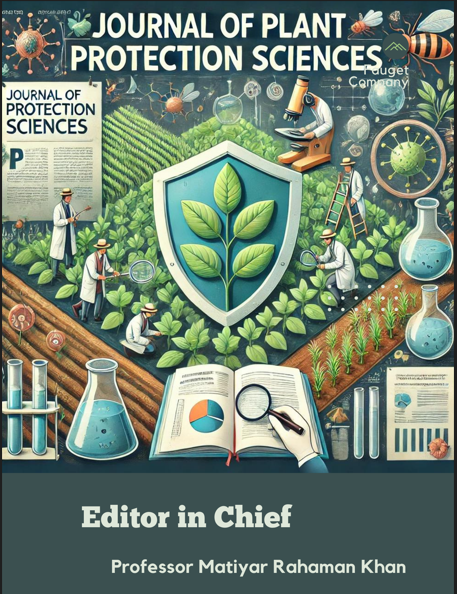Rot diseases of muga host, Som (Persea bombycina) in Assam, India
DOI:
https://doi.org/10.48165/Keywords:
Rot disease, Som, Muga, Heart rot, Canker rot, Phellinus contigu, Biscogniauxia mediterranea, AssamAbstract
Som (Persea bombycina, King. ex Hook. f. Kost.), the primary food plant of muga silkworm, (Antheraea assamensis Helfer) growing mainly in North Eastern region and Uttaranchal State in India. India is unique in producing the golden muga silk and has monopoly in global silk market grows up to 20-25 meters and survives for 18-20 years. Pollarding of Som plant at 6 ft height is a common practice in North Eastern region of India for controlled rearing (outdoor) of muga silkworm. It was observed that stems of som plant (specifically the pollarded plants) were generally infected with rot disease when it grows older. Phellinus contigus (under Polyporaceae), a white rot fungus, causes heart rot disease and Biscogniauxia mediterranea (= Hypoxylon mediterranea) (under Xylariaceae) causes canker rot disease of Som plant. A survey was conducted to study the infection of rotting pathogens on Som plants at Regional Muga Research Station (RMRS), Boko, Assam, India with during 2004-06. The disease incidence (DI %) caused by B. mediterranea was 12% while P.contigus showed 20% infection. Corelating the age of Som plants with susceptibility rot infection was found to be maximum in 10 years old plantation.
References
Anonymous. (2008-09). Annual Report of Central Silk Board, Bangalore, Karnataka. In Proceedings National Workshop on Vanya Silk Culture and Forestry (Eds. A.K. Rana, B.K. Bakshi, R.K. Khatri, D. Khanna, A.A. Siddiqui), p. 85.
Bakshi, B.K. (1963). Dying of Sal II. Role of Hypoxylon. Indian Forester, 89, 265-268.
Bakshi, B.K. (1971). Indian Polyporaceae (On trees and timber). ICAR, New Delhi, p. 262.
Butler, M.G. (2000). Morphology, rate, and spatial density of seta differentiation during in vitro development of fruit body of Phellinus contigus. Cambridge University Press.
Harsh, N.S., Uniyal, K., & Dutta, S.K. (2006). A new canker disease of Machilus bombycina. Indian Journal of Forestry, 29(1), 41-43.
McKinney, H.H. (1923). Influence of soil temperature and moisture on infection of wheat seedlings by Helminthosporium sativum. Journal of Agricultural Research, 26, 195-210.
Nobles, M.K. (1948). Studies in Forest Pathology VI: Identification of cultures of wood rotting fungi. Canadian Journal of Research, 26, 281-31.
Krishna Rao, J.V., Singh, R.N., & Shetty, K.K. (2003). Catalogue of wild silkworms and their host plants in India.

